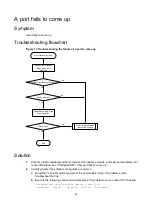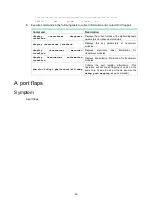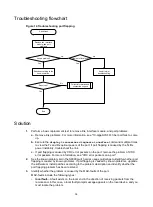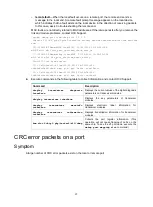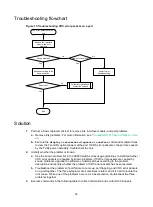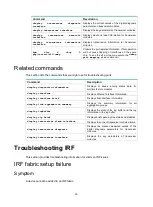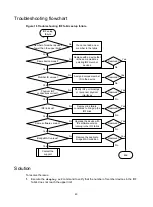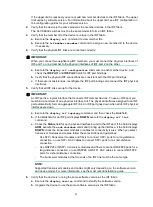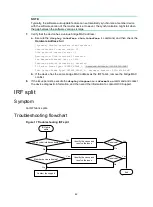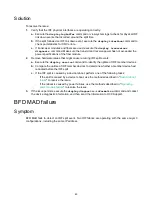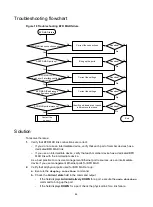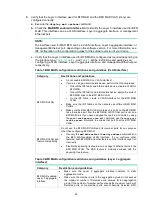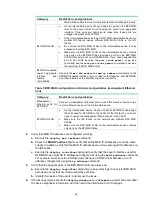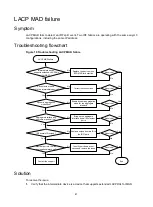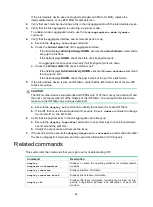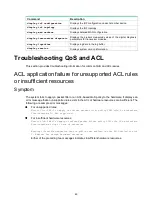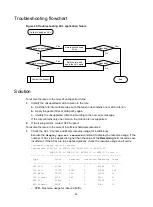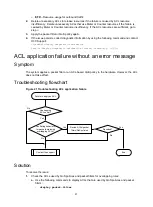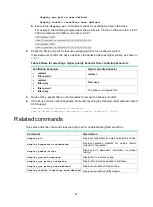
48
If the intermediate device does not support extended LACPDUs for MAD, replace the
intermediate device, or use BFD MAD for split detection.
2.
Verify that each member device has a link in the link aggregation with the intermediate device.
3.
Verify that the link aggregation is operating in dynamic mode.
To enable dynamic aggregation mode, use the
link-aggregation mode dynamic
command.
4.
Verify that the aggregate interface and its member ports are up:
a.
Execute the
display interface
command.
b.
Check the
Current state
field of the aggregate interface:
−
If the field displays
Administratively DOWN
, execute the
undo shutdown
command to
bring up the interface.
−
If the field displays
DOWN
, check the state of all its physical ports.
An aggregate interface goes down only if all its physical ports are down.
c.
Check the
Current state
field of each member port:
−
If the field displays
Administratively DOWN
, execute the
undo shutdown
command
to bring up the port.
−
If the field displays
DOWN
, check the physical link of the port for a link failure.
5.
If the intermediate device is also an IRF fabric, verify that the IRF domain IDs of the two IRF
fabrics are unique:
CAUTION:
The IRF member devices send extended LACPDUs with TLVs that convey the domain ID and
the active ID (the member ID of the master) of the IRF fabric. To avoid split detection failure,
make sure the IRF fabric has a unique domain ID.
a.
Execute the
display irf
command to identify the domain ID of each IRF fabric.
b.
If the IRF fabrics use the same domain ID, execute the
irf domain
command to change
the domain ID on one IRF fabric.
6.
Verify that the physical ports in the link aggregation are always up:
a.
Execute the
display logbuffer
command or use system logs to check for port-down
events around the split time.
b.
Identify the event cause and remove the issue.
7.
If the issue persists, execute the
display diagnostic-information
command and collect
the device diagnostic information, and then send the information to H3C Support.
Related commands
This section lists the commands that you might use for troubleshooting IRF:
Command
Description
display
diagnostic-information
Displays or saves the operating statistics for multiple feature
modules.
display interface
Displays interface information.
display interface brief
Displays brief interface information.
display irf
Displays IRF fabric information, including the member ID, role,
priority, bridge MAC address, and description of each IRF
member.

